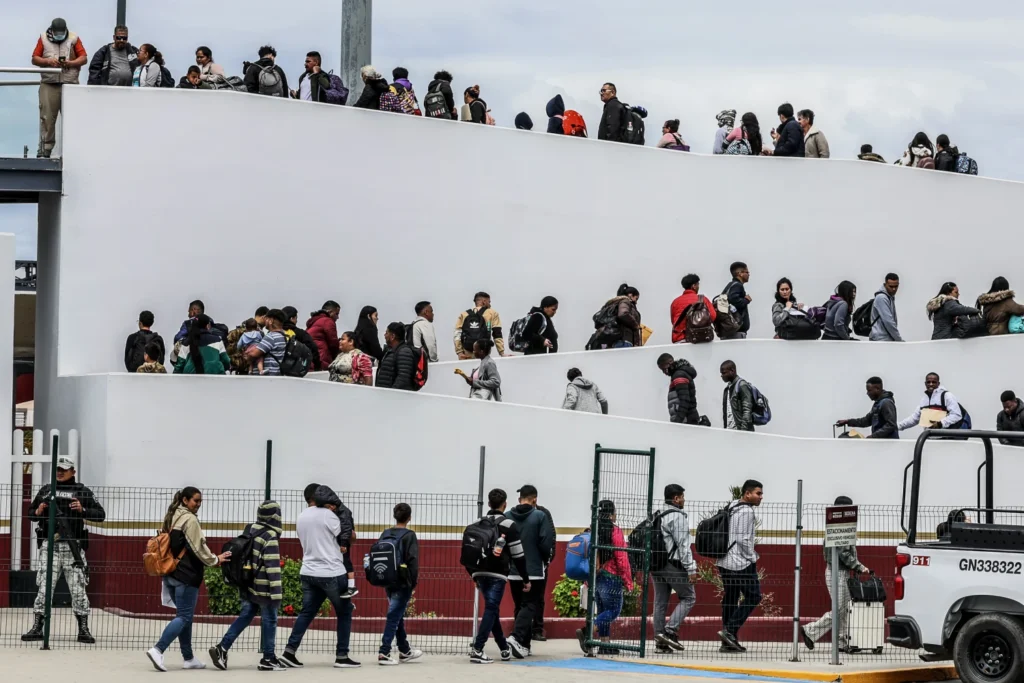The uncertainty surrounding the Trump administration’s promise of mass deportations has sparked fear and debate among the 13 million undocumented migrants in the United States. While some migrants remain hopeful that the enforcement will target only criminals, others are bracing for sweeping actions that could profoundly impact their lives. This article delves into the stories of individuals grappling with the looming threat and examines the broader implications of this policy shift.
Gabriela’s Story: A Life of Resilience Amid Uncertainty
More than two decades ago, Gabriela entered the United States hidden under corn stalks in a smuggler’s car. Today, she works as a housekeeper in Maryland and is one of millions of undocumented migrants facing an uncertain future under the Trump administration’s proposed immigration policies.
Despite the administration’s vow to conduct mass deportations, Gabriela remains unfazed. “I’m not scared at all, actually,” she says. “That’s for criminals to worry about. I pay taxes and work.” Her confidence stems from her belief that enforcement will focus on those posing security threats rather than individuals like her.
The Scope of Undocumented Migrants in the US
The term “undocumented migrants” encompasses a diverse group, including those who entered the country illegally, overstayed visas, or hold temporary protected status. According to the American Immigration Council, over five million U.S. citizens were born to undocumented parents, highlighting the complex and intertwined nature of immigration issues in America.
Undocumented Migrants Fear Mass Deportations: A National Concern
Across the country, undocumented communities are engaged in heated discussions about the incoming administration’s plans. WhatsApp groups, social media platforms, and local gatherings buzz with speculation and fear. Many fear the return of workplace raids and more aggressive enforcement measures, practices that had been scaled back under the Biden administration.
How Trump’s Policies Compare to Past Administrations
Historically, U.S. immigration enforcement has been significant. Under President Barack Obama, often dubbed the “deporter-in-chief,” about three million individuals were deported. President Joe Biden’s administration has also expelled over 1.5 million people. However, Trump’s promises suggest a more aggressive approach, including deploying the National Guard and using military aircraft to conduct deportations.
Economic Hopes vs. Deportation Fears
While many migrants fear the repercussions of these policies, some, like Carlos, an undocumented Mexican in New York City, see potential economic benefits. “A lot of Latinos, those who can vote, did so because they think he [Trump] can improve the economy,” Carlos said. His cautious optimism is tempered by concerns about workplace raids and enforcement crackdowns.
Dreamers Face a New Wave of Uncertainty
For Dreamers like Eric Bautista, the situation is particularly dire. Brought to the U.S. as a child, Eric has built a life teaching U.S. history to high school students in California. Now, he fears the rise of nativism and its impact on policies protecting individuals like him. “It feels like we’re at a turning point,” Eric says, comparing the current climate to historical waves of xenophobia he teaches about in class.

Undocumented Migrants Fear Mass Deportations: What Lies Ahead?
The Trump administration has yet to outline the specifics of its immigration enforcement plans. However, newly appointed border officials have indicated a focus on removing those deemed threats to public safety. Officials have also hinted at reinstating workplace raids, further fueling anxiety among undocumented communities.
Challenges to Implementing Mass Deportations
While Trump’s rhetoric suggests an aggressive stance, experts warn of logistical and financial hurdles. Coordinating mass deportations could require significant resources, including personnel, transportation, and detention facilities, which may limit the scale of operations.
The Human Toll of Mass Deportations
As the nation waits for more details, the human toll of such policies cannot be ignored. For migrants like Gabriela and Eric, the fear of losing their livelihoods, families, and communities looms large. Meanwhile, broader discussions about the role of immigration in shaping America’s economy and identity continue to dominate the national discourse.
Conclusion
The Trump administration’s promises of mass deportations have left millions of undocumented migrants grappling with fear and uncertainty. While some remain hopeful for economic improvements, the potential for aggressive enforcement has cast a shadow over countless lives. As the situation unfolds, one thing remains clear: the debate over immigration policy will continue to shape America’s future.














































